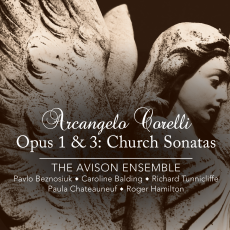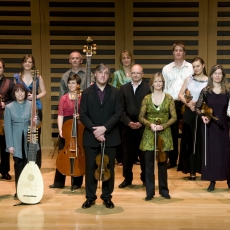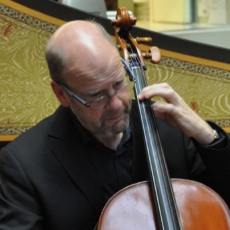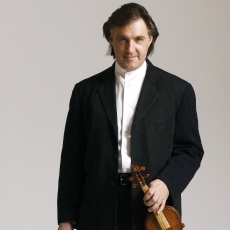The Avison Ensemble - Corelli: Opus 1 & 3 - MusicWeb International
It may seem odd that the Avison Ensemble have left the Op. 1 and certainly the Op. 3 Sonatas a chiesa a tre until the end of their complete edition. In fact, in many ways, this double CD package reveals that they have left the purest wine until the end. Indeed it is the purity of Corelli that especially struck his contemporaries including Dr. Burney, as Simon Fleming reminds us in his extensive and fascinating notes and those of us now who are fortunate enough to enjoy such wonderful performances as these. Also Fleming recaps for us how much his works were imitated at the time, especially in the Britain.
Corelli never used the term 'Church Sonatas' or the seeming opposite term 'Sonatas di camera' (Chamber Sonatas). These were added later and there is really little distinction. As most music students know it's really a matter of terminology. In these 'chiesa' works the movements, normally four in each Sonata, are simply given Italian titles. For instance the G minor Op.1 no.10 goes: 1. Grave attacca into Allegro 2. Allegro 3.Adagio 4. Allegro. Chamber Sonata movements might have titles like 'Corrente', 'Sarabanda', 'Gavotta' or 'Giga'. It does not prevent these latter works including more serious passages of fugue and counterpoint or the former works from having dance rhythms as for example the strong feeling of a Sarabande in Op.1 no.9 or inspiring the Giga-type Allegros.
The G minor Sonata just highlighted is not typical of the rest of the set in that it has two Allegros side by side, one of which emerges from the opening 'Grave'. The G major Op.1 no.9 has, as a finale, an Allegro which fades into an Adagio, another rare feature. In the Op.3 Sonatas the pattern is well set, as slow, fast, slow, fast except for the last. The grander number 12 has the first movement divided Grave-Allegro-Adagio followed by a Vivace then an Allegro which segues into an Adagio and two more movements to end with alternating tempi.
In the 1680s Corelli's patron was that rather tiresome woman Queen Christina of Sweden. She may well have had exercised a strong hand over what she wanted the composer to produce. Anyway these 'first fruits of my study' - Op. 1 is dedicated to her - have a wonderful sense of balance and taste. The counterpoint is almost renaissance in its purity. The harmonic suspensions are delicate and, apparently to his first audience, quite 'tear-jerking'. The Op. 3 set is dedicated to Duke Francesco II d'Este of Modena who later became King James II of England's brother-in-law. It's difficult to state firmly that there had been much technical or stylistic change or development in the ensuing eight years. Indeed Corelli's consistency is remarkable. However, perhaps the suspensions are more meaningfully achieved and the fugal movements are a little more developed.
The performances are, as noted by others concerning the Avison Ensemble's previous recordings, immaculate. Corelli's talkative two-part violin writing is sensitively handled by Beznosiuk and Caroline Balding. It is also beautifully balanced, for example in the final intertwining lines of the Allegro of Op.1 no.12. The players have worked together so often in this repertoire that they seem instinctively to shade and manipulate the phrases as if one voice. Occasionally Roger Hamilton moves the harpsichord as in Op.3 no. 2 which adds a new colour. Paula Chateauneuf is always perfectly secure and seems to guide the textures secretly from the side-lines. Richard Tunnicliffe distinctively adds dynamic shadings in almost every phrase.
Neither can one fault the recording. I have been involved in recording at the church just outside Cambridge at Chesterton and can vouch for its quiet atmosphere and perfect acoustic.
If I had to pick one of the sonatas it might be Op.1 No.4 in A minor. Its opening is full of that chatter I mentioned as is the third. The Adagio is just a series of delicious falling scales. The players understand every strain of these simple, direct but perfect ideas. Indeed I was looking at paintings by Jean-Baptiste Chardin (1699-1799) whilst listening. Chardin was a painter from another country who took everyday scenes as his subject. What an apt pairing these two great men of the baroque make.
This Linn album comes with the aforementioned essay, colour photos and the usual artist biographies. I hope that I have encouraged you to search out this wonderful recording and others in the Avison/Linn Corelli Edition.



